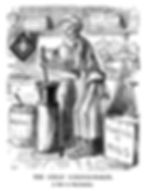Scheele's Green - Killer Color
- Fraser du Toit
- Nov 7, 2022
- 3 min read
Colorful clothing is commonplace these days. We can get wallpaper and paint in any color imaginable. That wasn't the case for most of human history. Not too long ago, bright colors were unattainable even for the wealthiest of emperors. One color in particular was very difficult to create and maintain - Green.
That all changed in 1775 when Carl Wilhelm Scheele, a German-Swedish chemist, invented a pigment he called Scheele's Green. This pigment would hold a vibrant green for a long time. Only, people seemed to get ill and die a lot after plastering their houses in Scheele's Green.
The Purest Green - To Die For
Carl Wilhelm Scheele was messing around with chemicals and a vat one day. He heated up sodium carbonate and added some arsenic trioxide. When he felt the mixture was good and goopy, he added copper sulfate. What he ended up with was a miraculously vibrant green.
According to historian Victoria Finlay, Scheele was well aware of the toxicity of his pigment. He wrote to a friend asking whether customers would like to be informed about the toxicity.
Scheele decided that the public would be better off left in the dark about it. His pigment was cheap to produce, and very quickly replaced previous greens. Scheele's Green was soon used to color furniture, wallpaper, children's toys, and clothes.
Nearly 40 years later, two chemists would try to improve Scheele's Green. They invented Paris Green, which is also incredibly toxic.
Victorian society went ballistic for Scheele's Green. They also started noticing an "unrelated" illness affecting everyone around them. That illness was Copper Arsenite poisoning.
Beauty is Pain - Symptoms of Scheele's Green

Copper Arsenite can be breathed in or absorbed through the skin. Symptoms of exposure to Copper Arsenite, according to this OSHA document, include:
Skin irritation - Rash, Thickening, Burning, Color Changes
Eye Contact - Irritation, Burns
Inhalation can cause ulcers, and it burns away the bone separating your two nasal passages
Inhalation also causes coughing and wheezing
Repeated exposure - Poor appetite, Nausea, Vomiting, Diarrhea, Stomach Pain
High Exposure damages your nervous system
Long term exposure could increase your risk of developing cancer. It also could increase the risk of your offspring developing birth defects. High doses can of course cause death.
Napoleon Loves Green - Green Kills Napoleon?
Napoleon wasn't doing too well in 1815. He had been forced out of his role as Emperor of France and forced into exile. Due to a British blockade, he was unable to sail to America, where he had intended to spend his exile.
The British instead took him to the island of St Helena, where he was given a manor. Napoleon was free to roam the island as long as he was accompanied by an English officer. The one-time emperor refused to comply and instead spent all of his time in Longwood Manor.
His room in the manor was wallpapered Scheele's Green. The damp climate of St Helena caused mold to grow on the wallpaper. Due to the mold releasing spores and generally damaging the wallpaper, Napoleon ended up breathing in a lot of arsenic.
Although the arsenic didn't actually kill Napoleon I, there was enough of it to contribute to the illness that finally took him. Historians now believe he died from stomach cancer.
Arsenic Green - Delicious Candy
In 1858 an event occurred known as the Bradford Sweets Poisoning. Local sweet merchant, William Hardaker a.k.a. Humbug Billy brewed up a batch of particularly green hard candy.
Humbug Billy had a good day at market, selling candy to over 200 people. All of his clients soon found themselves with a bad case of arsenic poisoning. 21 people died as a result.
This led to the British government passing the 1868 Pharmacy Act, which put limits on the amount of arsenic one could use.










